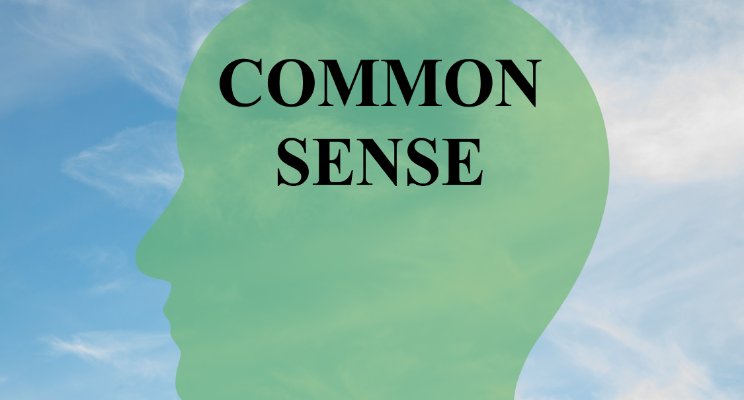Precedents are current with the Lexon update for 1 July 2017.
Domestic violence (QLD)
Commentary has been updated to reflect recent amendments introduced by the Domestic & Family Violence Protection and Other Legislation Amendment Act 2016.
Transport accident claims – TAC
The commentary and precedents in this publication have been updated to reflect changes to indexed amounts
Family law costs agreement
The family law costs agreements have been updated to reflect the new scale for itemised costs.
Habits should be broken
By Guy Dawson, CEO
Despite the encouragement to self-help with the writings of such as Dale Carnegie and Stephen Covey on winning friends and being highly effective the one habit that remains rigid is the resistance to change.
of such as Dale Carnegie and Stephen Covey on winning friends and being highly effective the one habit that remains rigid is the resistance to change.
So as legal insurers struggle to make safe the behaviour of older practitioners, and only have hope for influencing the practice of younger ones, those heralding change from paper to digital from old language to new, from old precedents to better new ones, struggle for converts.
Admittedly change is painful – like learning the operation of a new phone or assembling Ikea furniture. A bit of time and a bit of patience is required for both, and yet neither is plentiful in the life of a practitioner. Yet the rewards are!
It seems the most successful firms welcome and embrace new technology, modernise their precedents, improve management, incentivise staff and refresh their practices each and every day. They make more money, and the practice of law becomes a little easier. Vitality is their habit.
Sounds exhausting – but much less so than the apathy of endless hours of unchanging slog.
De Facto – The Tension Between Family law, succession law and Superannuation
By Guy Dawson, CEO
It is generally accepted that when two people get together there are circumstances that exist, or a period of time that has elapsed, before they can be considered life partners – before their financial lives are joined and divided in an equitable manner on separation or death.
In order to investigate whether there is in fact a de facto relationship in family, succession and superannuation law, the interpretation acts such as the Commonwealth Acts Interpretation Act 1901 section 2F sets out the matters to consider as follows:
(a) the persons are not legally married to each other; and
(b) the persons are not related by family; and
(c) having regard to all the circumstances of their relationship, they have a relationship as a couple living together on a genuine domestic basis. Working out if persons have a relationship as a couple the circumstances considered may include any or all of the following:
(a) the duration of the relationship;
(b) the nature and extent of their common residence;
(c) whether a sexual relationship exists;
(d) the degree of financial dependence or interdependence, and any arrangements for financial support, between them;
(e) the ownership, use and acquisition of their property;
(f) the degree of mutual commitment to a shared life;
(g) whether the relationship is or was registered under a prescribed law of a State or Territory as a prescribed kind of relationship;
(h) the care and support of children;
(i) the reputation and public aspects of the relationship.
Registering a relationship is tantamount to deciding to marry so it is not a common practice.
Family Law
For the Family Court to make orders, under the Family Law Act 1975, the time that must have elapsed for the finding of a de facto relationship is at least 2 years.
The other circumstances that may establish jurisdiction are:
- That there is a child of the de facto relationship; or
- That the party to the de facto relationship who applies for the order or declaration, made substantial contributions and a failure to make the order or declaration would result in serious injustice to the applicant; or
- That the relationship is or was registered under a prescribed law of a State or Territory.
Financial arrangements before the expiration of that time are matters for consideration by the courts as partnerships or joint venture arrangements.
Succession Law
Succession Law across the States defines the term partner or spouse to include a person who was either married to or in a domestic partnership with the intestate. Domestic partnership is a relationship for a continuous period of at least 2 years prior to death, or that was registered under a prescribed law of a State or Territory, or one that resulted in the birth of a child,.
Superannuation
The relationship test of 2 years, does not apply to the determinations of Superannuation Trustees under the Superannuation Industry (Supervision) Act 1993 .
The failure to include such a time period in the SIS legislation results in some ludicrous decisions which sees large sums of money paid to a boyfriend or girlfriend in a relationship of only a few weeks, or a month or two shacked up, without children and no registered relationship. Family members such as parents and siblings are often overlooked and receive nothing at all.
The SIS Act needs to be brought into line with family and succession law to provide the minimum period of 2 years so common sense can prevail.
Common law allows for common sense
By Guy Dawson, CEO
For reasons hard to understand, the profession seems to have gone along with the growth of regulation and the slow demise of common law.
It needs to be said loudly and clearly that common law allows for individuality, flexibility, and common sense, whilst regulation equates to conformity and rigidity.
It is time to reaffirm that personal responsibility should determine our behaviour, with resort to the good offices of the bench if we stray outside the reasonable bounds set by the laws of contract, crime and tort. The wrong worked on our freedoms, by regulating our behaviour is now ever present.
Each day I am assaulted by the mindlessly inflexible rules designed for everyone and yet suiting no one. These well-intentioned rules are developed to comply with suffocating regulation and administered by impersonal apparatchiks in government and big business, all of whom have lost sight of everyday common manners and friendliness, and all are securing their jobs and protecting their backs against some imagined threat. At the forefront of this unconsciousness are the privacy rules followed closely by the consumer credit rules and verification of identity rules.
It seems that we are no longer to be trusted with the discretionary freedom to choose, contract, and speak, as the imperfection of individual behaviour is no longer preferable to standardised impersonal behaviour produced by controlling regulation.
A source of anxiety
By Guy Dawson, CEO
All of us behave to comply with the views of the group to which we belong. It is our collective mindset. We witness this in our children every day as they seek to fit in with their peers at school. Long hair short hair, shirt in shirt out, don’t drop me off in the Porsche please use the ute, can’t leave before midnight not 10 please Mum. And so it goes. As Aussies we don’t much like the way the Yanks carry on and as for the French or the Germans well what are they all about, they don’t even play cricket.
And so here we are in 2017 in a group which boasts of a 30% depression rate and twice the general population’s substance abuse. And this group has since 1970 multiplied in number 50-fold. This is us – legal practitioners.
So what goes on that makes our group have such a high level of dysfunction? Why is it that almost universally practitioners express their desire to do something else if only there was something else they could do?
Perhaps some answers.
The job is demanding – Organise the office. Use matter management software, accounting software, purchase or subscribe to reliable up to date legal support materials including precedents. Manage risk by using matter plans for the conduct of every matter.
Clients are always trouble – Learn how to ensure the monkey stays on the client’s back – not yours. Put the client’s interests in front of your own. Candour efficiency and charges that are reasonable and in line with the market, are essential in minimising trouble.
Can’t rely on the staff – Incentivise, train and have strong reliable office values. The psychology of all businesses flows down from the top. Your nature will be the nature of the practice. Ideally, light hearted, efficient and successful.
There is always conflict – speak to the other side’s practitioner. Seek compromise and agreement. Resolve arguments as quickly and cheaply as possible. Never put fee earning above quick resolutions.
My professional responsibilities and compliance requirements overwhelm me – remember the purpose of all the rules is to ensure that the relationship with clients is an honest one. Get the retainer right, do the job well and on time, charge market rates, communicate with clients. Easy really !
With the deregulation of fees our profession became a business and put us in competition with an ever-growing group of fellow members.
For the sake of the law it is time we recognised that a ‘business’ model does not work and we returned to the days when we were a profession and part of an important group worthy of the respect of the community for the role we play in the implementation of a fair and stable civil and criminal system. The practice of law is a challenge not a sentence. It has scope for great satisfaction but like all good things takes some work to achieve.
The search for an easy way
By Guy Dawson, CEO
Bearing in mind that easy paths are always downhill is it possible to practice law in an untroubled way? It seems unlikely in the face of the evidence of the widespread dislike of the lawyers lot. Why is it that a serious approach to the lawyers duty to act in the best interests of their clients is assumed to be difficult and preclude good humour and a light touch. Must it be so? No. The onerous complexity of legal practice is reduced by matter and information management systems that are readily available. Why is it that, after years of study, the pursuit of knowledge stops on graduation and inertia replaces investigation of the next step of converting intellectual preparation to its practical application.
The practice of laws is not a sentence to misery but it needs effort to find the easy path which is not downhill. Systems systems systems is the answer. Spending the time and the money to introduce them is the only path to practicing happily.
Office organisation
By Guy Dawson, CEO
The importance of office organisation cannot be overstated. It provides the basis of profitable and worry free practice. Profit is not necessarily related to size or location or how busy a firm may be. Research shows that busy firms are often poor profit performers due to poor office organisation and managerial practices. The more profitable firms simply better organise and manage their practices.
The work in a practice is usually either low margin repetitive work like conveyancing which is handled by staff members under the supervision of the principals or high margin work in which the costs are less critical to the client than the quality of the advice. Low margin work requires highly organised practices and this can be achieved through the adoption of readily available technology and systems.
Such systems establish the role of each person in the practice by allocating their responsibilities. These are defined in a position description. In performing their role staff need direction, ongoing support, and training. Office policies are the everyday rules by which the office ship is steered and must be foremost in everyone’s mind all the time. Examples include, how to answer the phone, how to behave towards clients, how to deal with complaints, on time delivery of work. This is best achieved through saving a policy manual on the desktop of each staff member and regular if not daily but brief meetings for discussion by all team members. By this means a team is created with a supportive and coherent approach to the complex work of a legal practice.
Time spent on a practice is rewarded in multiples when working in a practice.
- « Previous Page
- 1
- …
- 75
- 76
- 77
- 78
- 79
- …
- 103
- Next Page »





